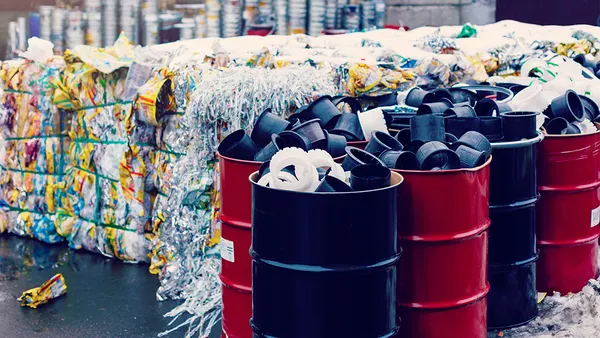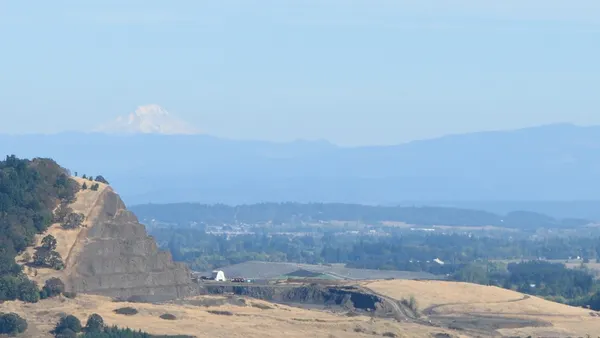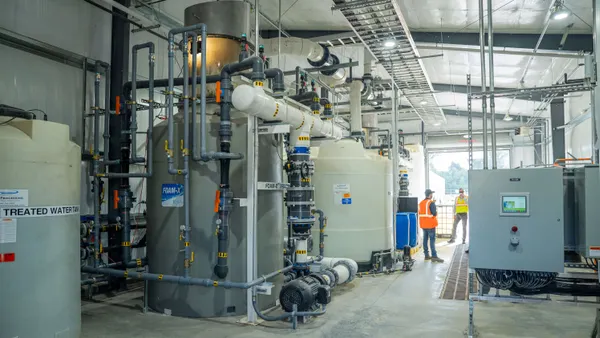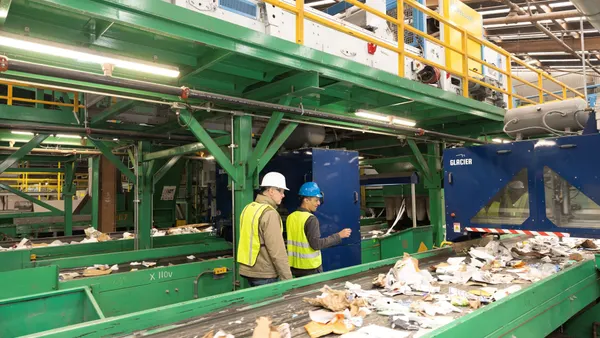The impending closure of New York’s Brookhaven Landfill is a serious concern for the Long Island area; some even say it’s a crisis. Yet the decentralized nature of regional waste planning may be preventing a clear solution.
The town-owned site, which opened in 1974, has the capacity to accept an estimated 1.2 million tons of material per year. Since it stopped taking solid waste in 1989, those tons consist primarily of C&D waste, ash from a nearby combustion facility Covanta operates in Hempstead, auto shredder residue and debris from large storms. The town of Brookhaven plans to stop accepting C&D waste at the landfill by the end of 2024 and anticipates running out of capacity for ash within two years after that.
Other options for local disposal of the material that’s going to the Brookhaven Landfill are limited. Due to a 1983 state law, no other landfills are allowed to open on the island and mass burn facilities already handle a large volume of the area’s materials. Experts say Long Island can adapt once again, but it will be challenging.
"With the closure of the landfill, now I think it's appropriate to say we're facing a crisis, another crisis,” said Frank Roethel, a research professor and director of Stony Brook University’s Waste Reduction and Management Institute. "The private sector will move in, and they'll take as much as they can, and hopefully it'll be enough to provide some relief, but it'll be expensive."
The region has one other ash monofill for material from a combustion facility in Babylon and two other C&D landfills. While data is limited on the full scope of C&D waste activity in the area, and advocates hope recycling can also reduce overall volumes, some form of long-distance waste exporting will likely be needed.
Winters Bros. Waste Systems, the area’s largest hauler, is signaling its intention to be a lead player in that shift through multiple investments and messaging, such as a report it issued in February about regional solid waste issues.
Last November, the company acquired two rail-served transfer stations from WIN Waste Innovations in Lindenhurst and Farmingdale. Will Flower, senior vice president at Winters, called it a “win-win situation because we were in the best possible position to collect and transfer material” and WIN Waste was “in a great position to provide the disposal facilities” at its rail-served landfill sites outside the state.
This followed Winters’ 2020 purchase of a Class 3 railroad company, which it is rebranding as Shamrock Rail. The company now aims to consolidate some existing truck transfer operations and offset the Brookhaven closure with a new rail-served transfer station that could potentially handle an estimated 6,000 tons per day. The project would be on a large parcel it acquired in Yaphank (a neighbor to Brookhaven) adjacent to the landfill and an existing MRF operation.
Local advocacy groups have been critical of the proposal, questioning its scale and the potential to divide conservation forest land. Long Island has three existing rail transfer sites (including the two Winters acquired), and two more from local companies are moving through the planning process.
Winters sought approval for an exemption from local zoning requirements for the transfer station through the federal Surface Transportation Board, which could have expedited the process. That exemption was denied in October 2020. Citizens Campaign for the Environment (CCE), a local advocacy group, opposed the exemption and said at the time “there is no crisis” in terms of waste disposal needs. The local NAACP chapter has also been a vocal opponent of the entire transfer station project in recent months.
CCE Executive Director Adrienne Esposito said the situation is concerning on Long Island, but she still questioned the tonnage estimates behind the Winters proposal. "Can we say there's a crisis if we don't know what it is we need?" she asked. Esposito also questioned why more information hasn’t been provided about Winters’ plans.
"There's been a lot of public relations and ads in the paper to support it, but we don't yet know what it is because there's no authentic proposal that has been submitted.”
Flower said the company has not yet submitted a formal application to the STB, which is the first step before applying for local approval, because details are still under development.
“Winters Bros. is good at a lot of things, including siting, permitting, and operating transfer stations. We have 12 facilities on Long Island, so we have an excellent understanding of the process and believe that we are on track,” Flower said via email. “We’ll make a formal application at the appropriate time. The rail terminal operation is a big infrastructure project that will serve Long Island for the next 50 years, so we want to make sure we get off to a good start with a great design.”
A Winters-supported bill has been introduced at the state level that would authorize Brookhaven and Suffolk County to amend a conservation easement at the site to allow rail access, but it has not gained traction. Flower said the bill’s fate was not a factor in the timing of the proposal for a new rail transfer station. He also said the pending outcome of commercial waste zone bids in New York City (which Winters has pursued in the past) is not a factor.
Regional factors
Long Island’s two counties outside of New York City play a relatively limited role in waste systems, and the island is known for having numerous towns, villages and special waste districts to serve small areas of increasingly wealthy residents.
Robert Lange, former executive director of the North Hempstead Solid Waste Management Authority and a former official in New York City’s Department of Sanitation, has been critical of this fragmented system. According to Lange, Long Island residents “pay hardly anything for garbage collection,” and there’s little incentive for local entities to step out of their silos.
"Long Island was built up, basically, as a community based upon the idea of local control,” said Lange. "What community is going to bear the brunt of any new infrastructure to support a regional facility?"
While Lange said raising taxes to offset new costs is politically risky, he also noted that costs have already been creeping up in recent years, in part due to changes in the federal hours-of-service restrictions for long-haul drivers. Roethel also noted this as an issue for any post-Brookhaven scenario.
"Unless you want to double the cost of transportation and disposal of this material, you would need to find a location where you could pick the material up, take it, dump, and return, all within 10 hours,” said Roethel.
The recent Winters report highlighted the need for more regional planning. CCE’s Esposito said she believes a regional waste authority could help solve this issue, and she noted a 2% cap on property tax increases in New York as another potential factor to watch in how local governments adapt to rising waste costs.
"This is really going to be a fiscal war,” she said. “The public doesn't want to pay more for garbage.”
The role of recycling
Amid all the discussion about finding new disposal capacity, local stakeholders are also looking at new ways to boost recycling — particularly in the MSW stream — which could play an incremental role in reducing volumes.
The upcoming American Organic Energy anaerobic digestion facility in Yaphank, permitted for 210,000 tons per year, could be one piece of the puzzle. Although construction has been delayed for multiple years, the company aims to be pouring concrete soon.
"We will be fully operational third quarter next year,” said CEO Charles Vigliotti, speaking at a Stony Brook University event in March.
Lange expects the site to be a destination for landscape waste — much of which existing sites of Long Island Compost, an AOE subsdiary, are managing — and he thinks attracting new food waste volumes will be more complex.
New York’s commercial organics diversion mandate could also lead to some additional volumes diverted from the MSW waste stream. A representative for the state’s Department of Environmental Conservation said at the Stony Brook event that 250 local generators fall under the law. Flower said that Winters has invested in organics collection technology, and was one of the first to sign a contract with Vigliotti’s company, but feels the concept isn’t fully viable yet.
On the packaging side, the Winters report lists multiple recommendations — including support for a minimum recycled content law and an update to the bottle bill to double the deposit value for glass containers to 10 cents.
Winters was among the numerous recycling companies that opposed a 2019 bottle bill expansion proposal, but Flower said the company’s thinking has evolved. Because the state’s current program doesn’t include wine and spirits bottles, and glass values can be challenging, handling those separately via a buyback program could be “successful and effective,” he said.
The company does not support extended producer responsibility, a concept proposed by Gov. Kathy Hochul in state budget negotiations that remain ongoing.
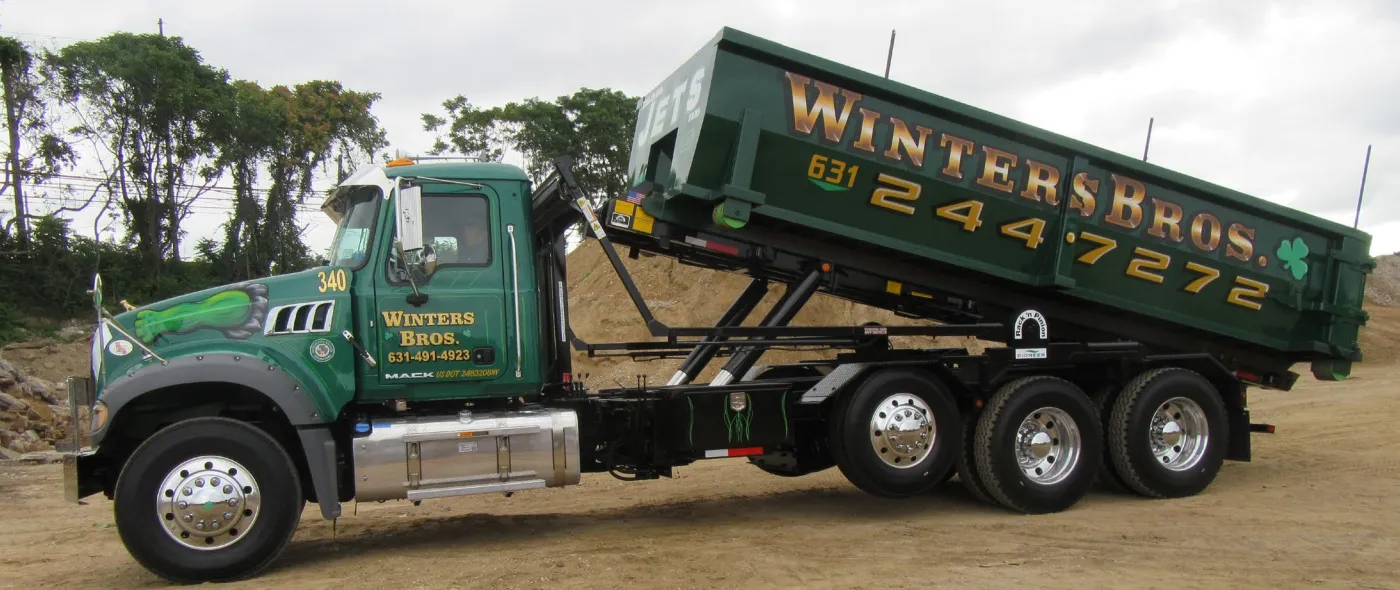
Looking ahead
As the Brookhaven Landfill’s closure date approaches, no clear path has emerged for what comes next.
The DEC has hired Roethel and his university team — in connection with the towns of Brookhaven and Babylon — to perform a $250,000 study of regional waste needs.
One of the main research focus areas will be C&D, as the landfill is soon going to stop taking an estimated 720,000 tons per year. Flower and others have raised concerns about illegal dumping. Ash will be another focus. Roethel is a proponent of using ash as an aggregate in construction materials, pointing to a campus boathouse he built in 1990 that remains durable. Environmenal justice concerns and financial implications of the site’s closure are other topics the research will address.
Two beneficial use determination applications are pending with DEC for ash projects. One is from Pure Recovery Group to process ash from Babylon into pavement aggregate and a lightweight fill material. The other, from Covanta, is a statewide application to process ash into aggregate for asphalt pavement at the company’s Fairless Hills operation in Pennsylvania.
Covanta, which operates all four of the mass burn facilities on Long Island, said this is one of multiple possible options.
“We have not finalized any plans for ash after the closure of the Brookhaven landfill. We are currently exploring all the options that present sustainable opportunities for Long Island including the potential of ash reuse,” said spokesperson Nicolle Robles via email.
During the Stony Brook event, Brookhaven Supervisor Ed Romaine said he feels the state needs to take a greater role.
“We need partners. This isn't going to be where the DEC can be the regulator instead of the innovators. We need them to move to be the innovators and work with the towns, the villages and, more importantly, the county,” he said. "We cannot delay, we cannot wait. The future of this island is dependent on this."
David Vitale, director of DEC’s Division of Materials Management, said at the event that the agency has a history of working with Long Island on solid waste issues. He also noted the state has provided “significant” funding of at least $100 million for combustion facilities, landfill closure, recycling programs and other areas in recent decades.
"We're a home-rule state, so the responsibility, primacy, for waste management, falls to local municipalities. So we each have our role, and we each need to support each other,” said Vitale. "I believe that the department has been a partner within what we're authorized to do."
Last week, an agency spokesperson reiterated that its role is to review and approve local solid waste plans, provide technical assistance and offer state funding. In addition, the agency pointed to its own periodic solid waste plans, the latest of which calls for numerous policy shifts, as another example of its support.
Some don’t expect the situation to get resolved without a more formal regional collaboration.
“We are literally the Titanic heading toward an iceberg: Everybody sees it, and no one wants to take the wheel,” said Esposito.
Flower noted that New York City’s closure of the Fresh Kills Landfill was also complex, but it resulted in a shift to other forms of managing material, such as rail transfer.
"There's usually never a single silver-bullet solution. Instead, it requires a holistic approach,” said Flower. "It's an opportunity for us to reset here on Long Island."








